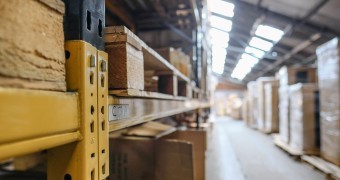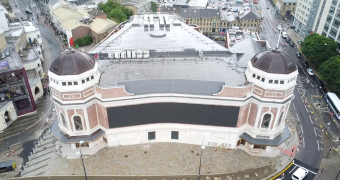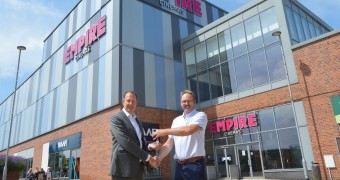Table of contents
What is a Principal Designer?
A principal designer is appointed to manage and coordinate health and safety during the pre-construction phase of a building project on behalf of a client. Under the new CDM regulations, they are responsible for planning, monitoring and managing health and safety during design and planning stages.
In April 2015, the Construction (Design and Management) Regulations (CDM Regulations) were updated to enhance health and safety issues during a development project. As a result of these changes, a new role, that of Principal Designer (PD) was created. We look at what they do and why it is important.
Expert knowledge and practical advice
Operating in a network of offices across the nation, our team of over 60 building surveyors we can provide a wide range of consultancy services. We can provide a solution for your commercial property requirements.
What is the role of a principal designer in projects?
The principal designer's role begins before the construction project has even started. They work alongside the client and the principal contractor and are responsible for planning, managing and co-ordinating health and safety at design stage to identify, eliminate and control any potential risks.
They must consider any pre-construction information which is available, such as a pre-existing health and safety file, and offer relevant information to both designers and contractors to enable them to carry out their duties correctly. It is their responsibility to ensure that the designers who are being used for a project, possess the correct skills and have sufficient experience in order for them to be able to carry out the work.
For small-scale domestic development projects a principal design may be carried out by either the principal contractor or the designer responsible for the pre-construction phase. On larger projects, a principal designer can appoint a Health and Safety specialist to assist them in performing their duties.
CDM regulation changes
Health and safety is of primary concern during any construction or development project. Without it, those who build, use or maintain structures are at risk. When the CDM Regulations were changed, the principal designer took on full responsibility for CDM during the design phase of a project, as opposed to previously when the role was ‘contracted out’ to an individual who was not fully involved and, therefore, had little say in the design.
What are the benefits of using a principal designer?
Principal designers can be an individual (for smaller projects) or part of a larger organisation, and are appointed by the clients. They play a vital role in assessing how health and safety risks can be managed during a development. The decisions they take in the pre-construction phase make a significant impact on the project and ensure that health and safety are paramount throughout the process. Principal designers are usually architects or project managers and, therefore, have the technical capabilities, experience and understanding to combine their roles during the project.
The importance of a principal designer’s role cannot be underestimated and should never be omitted from a development project. Like all aspects of health and safety legislation, it is intended to ensure that everyone involved in construction stays safe during the course of their work.
For advice and information on any aspect of building projects, contact a member of our team.
Experts in commercial property
Contact our team of leading auctioneers, property agents, and RICS-qualified surveyors today.
Get in touch with the Eddisons team
Please contact us for more details and information












